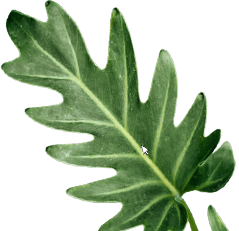All Types Of Maps
All Types Of Maps
Are you planning your next adventure but feeling lost without a map? Don’t worry, we’ve got you covered. In this article, we’ll guide you through all types of maps, the best places to visit, and local cultures to make your trip unforgettable.
Traveling without proper navigation can be stressful and overwhelming, especially in unfamiliar locations. A lack of knowledge about local customs and traditions can also lead to misunderstandings and discomfort. But with the right maps and cultural awareness, you can confidently explore any destination.
From the stunning beaches of Bali to the vibrant cities of Europe, there are endless possibilities for travel. Some popular destinations include the Great Wall of China, the Eiffel Tower in Paris, and the Grand Canyon in the United States. Each location has its unique attractions and experiences, so do your research and plan accordingly.
In summary, by utilizing various types of maps and learning about local cultures, you can enhance your travel experience and navigate with ease. Whether you’re exploring natural wonders or bustling cities, preparation and knowledge are key.
All Types Of Maps
One type of map that is essential for any traveler is a physical map. This map displays geographical features such as mountains, rivers, and landmarks, making it easy to orient yourself in a new location. Additionally, digital maps can provide real-time updates on traffic and weather conditions, helping you avoid potential delays or hazards.
Topographic maps are another type of map that can be helpful, especially for outdoor activities like hiking or camping. These maps show detailed information about elevation changes and terrain, enabling you to plan your route and avoid difficult areas.
Cultural Maps
Cultural maps provide insight into the local customs and traditions of a specific area. By researching cultural norms, etiquette, and taboos, you can avoid unintentionally offending locals and gain a deeper appreciation for their way of life. For example, in Japan, it is customary to bow when greeting someone, while in some Middle Eastern countries, it is considered disrespectful to show the soles of your shoes.
Food maps are also a fun way to explore local cuisine. By researching traditional dishes and popular restaurants, you can taste the unique flavors of a region and immerse yourself in its culinary culture.
Types of Maps for Transportation
Transportation maps are crucial for getting around in cities and countries. Subway maps, for example, provide information on train lines and stations, making it easy to navigate public transportation. Road maps and GPS systems can also be helpful for driving or cycling, providing directions and traffic updates.
Flight maps display airline routes and schedules, helping you plan your itinerary and find the best deals on airfare.
FAQs
Q: What is the best type of map for hiking?
A: Topographic maps provide detailed information about elevation changes and terrain, making them ideal for outdoor activities like hiking or camping.
Q: How can I learn about local customs and traditions?
A: Research cultural norms, etiquette, and taboos before traveling to a new destination. You can also ask locals for advice and observe their behavior to gain a better understanding of their way of life.
Q: What is the difference between a physical map and a digital map?
A: Physical maps are printed on paper and display geographical features such as mountains, rivers, and landmarks. Digital maps are available online or on mobile devices and can provide real-time updates on traffic and weather conditions.
Q: How can I use food maps to explore local cuisine?
A: Research traditional dishes and popular restaurants in the area you’re visiting. You can also ask locals for recommendations and try new foods based on their suggestions.
Conclusion
By utilizing all types of maps and learning about local cultures, you can enhance your travel experience and make the most of your adventure. Whether you’re hiking in the mountains or exploring a new city, preparation and knowledge are key to a successful trip.
